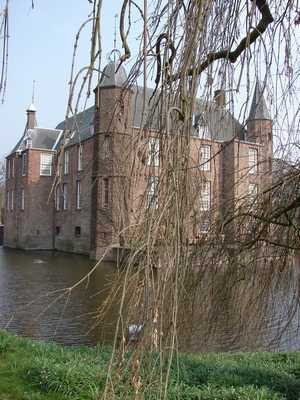Tuyll
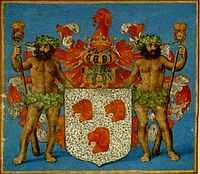
Tuyll is the name of a noble Dutch family, with familial and historical links to England, whose full name is van Tuyll van Serooskerken. Several knights, members of various courts, literary figures, generals, ambassadors, statesmen and explorers carried the family name.
History
15th Century
Traditionally, the van Tuyll van Serooskerken family claimed to be descendants of a much older, noble Van Tuyll (van Bulckesteyn) family from Guelders. However, there is no archival evidence for this thesis, and given the fact that first documented members of the Van Tuyll van Serooskerken family merely used the name of van Serooskerken, and never the name Van Tuyll, most historians who have done research in primary sources, conclude that this is a later fabrication to disguise the non-noble roots of the family .[1][2][3] In particular, Dr. J.G. Smit states that the van Serooskerken probably paid a member of the Van Tuyl van Bulckesteyn family to claim in a contract drawn up in 1603 that they have common ancestry.[1][4] The family Van Serooskerke then started to use the name Van Tuyll van Serooskerken. During the course of the 17th and 18th century, the Van Tuyll van Serooskerken commissioned the fabrication of fake portraits and family trees to support their fictive descent from the van Tuyll van Bulckesteyn family. [5] The family tree starts with a Pieter Hugensz, mayor of Zierikzee, who in 1483 bought the Serooskerke manor from Maximilian of Austria. [6]
16th century
Hieronymus van Serooskerke (1510–1571),[7] burgrave (viscount) of Zeeland, married Elisabeth Micault , daughter of Jean, treasurer of the Order of the Golden Fleece. His tomb is in the Church of Stavenisse .
His eldest son, Philibert (died 1579) inherited his father's titles, was made lord of a second Serooskerke (in Walcheren), hence the final n in Serooskerken, and was governor of Bergen-op-Zoom since 1572. The lordship of Serooskerke in Walcheren was granted by Charles V, Holy Roman Emperor and King of Spain.
Hendrik van Tuyll (1574–1627) was ambassador to the court of England and member of the highest council, the Raad van State (founded in 1531). His son Hendrik Jacob was also member of the council from 1690.
17th century
In 1623, King James I of England gives Philibert van Tuyll (died 1661) the right to carry a rose extracted from the royal coat of arms and bearing the crown of England on the family coat of arms.
In 1641, Gerard van Honthorst painted the young Hieronymus and Frederik van Tuyll.
18th century
Jan van Tuyll (1710–1762), baron of Heeze and Leende, lord of Vleuten, married Ursulina van Reede (1719-1747), daughter of Frederik, 2nd Earl of Athlone, and Henriette, countess of Nassau, daughter of William Nassau de Zuylestein, 1st Earl of Rochford.[8]
Isabelle van Tuyll (1740–1805) , an 18th-century author, also known as Belle van Zuylen and Isabelle de Charrière was the daughter of Diederik van Tuyll (1707–1776) , born in the castle of Zuylen. Her mother Helena de Vicq was the daughter of Rene de Vicq, mayor of Amsterdam and administrator of the Dutch West India Company. Her work displays fine psychological analysis and a portrait of manners anticipating early 19th-century emancipated ideas, though she was opposed to revolutionary radicalism. The highest skyscraper planned in the Netherlands was to be called Belle van Zuylen.[9]
Frederik van Tuyll (1742–1805) was colonel of the cavalry regiment van Tuyll van Serooskerken (1777–1793): .
From 1768-83 Baroness Marie Katharina van Tuyll van Serooskerken of Knyphausen (Germany), after the death of her husband, Count Christian Frederik Bentinck (1734–1768) (son of Charlotte-Sophie von Aldenburg und Knyphausen and Willem Bentinck, Count Bentinck from 1732), was Regent Dowager for their son, Wilhelm II Gustav van Bentinck (1762-35), who reigned 1768–1810, 1813 and 1818-35. The territory was annexed to the Netherlands in 1810 and occupied by Russia 1813-18. Marie Katharina lived 1743-98.
Jan Maximiliaan van Tuyll (1771–1843) was the governor of Utrecht and then the first governor of North Holland. He married Louise van Hardenbroek, daughter of Johan van Hardenbroek and Countess Susanne d'Aumale (see Duc d'Aumale).
19th century
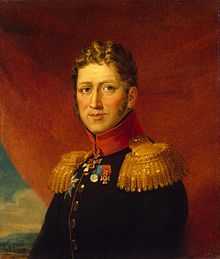
In 1822, The High Council of Nobility, declared members of the family were competent since early times to carry the oldest title of nobility, baron. They are "noblesse immemoriale", without ennoblement, predating 1351, from when on nobles of non knightly origin were created in Italy. Obviously, this does not correspond with the historical evidence that the family was originally a patrician, but not noble family.[1] [2] [3]
The "baron de Tuyll" (Diederik Jacob, 1772–1826),[10] Major General in the Russian army was Russian envoy at the court of the King of Portugal and Brazil, and from 1815 Russian plenipotentiary to the Holy See, had colloquies in regard to the union of the two Churches, and from 1822 to 1827, Russian minister to the United States and resident of Decatur House.[11] He represented the Holy Alliance in the United States. As a consequence of his stay, a part of the silver collection of the White House carries the family coat of arms.
General Sir William Tuyll, Knight Commander of the Royal Guelphic Order and Knight of the Bath was aide-de-camp to Henry Paget, 1st Marquess of Anglesey and accompanied him to Portugal, Spain and the Walcheren expedition. Colonel, commander of the 7th Queen's Own Hussars, the senior light cavalry regiment of the British Army, where he fought in India. He was private secretary to the Viceroy of Ireland. He was one of the founders of the Oriental Club.
Carel Lodewijk van Tuyll founded the town of Bayfield, Ontario and, in 1851, his son Vincent van Tuyll (1812–1860), in partnership with Prince Henry of Orange, discovered the biggest tin deposit until today on the island of Billiton and founded what is now the world's largest diversified resources company, Billiton.
His son Reginald van Tuyll (1845–1903) may have inspired the eponymous character in Pelham Grenville Wodehouse's book Indiscretions of Archie, 1921. He married the countess Anna Mathilda van Limburg Stirum after the death of the Crown Prince Willem of the Netherlands, who had been refused permission to marry her, probably as she was the illegitimate child of William III of the Netherlands.
Family castles and Heerlijkheid (seignories)
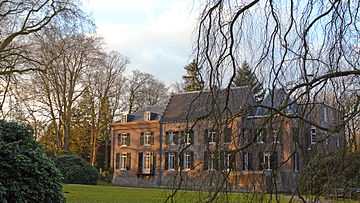
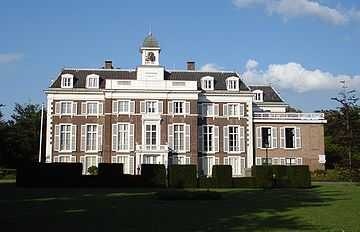
- Tuyll
- Bakerbosch
- Ringelenstein
- Vogelenburg
- Palmesteyn
- Bulkestein
- Schorestein
- Rijnestein
- Vleuten
- Coelhorst
- Zuylen
- Moermond
- Stavenisse
- Geldrop
- Wulven
- Rijnhuizen
- Mijdrecht
- Heeze
- Nederhorst
- Ter Meer
- Vollenhoven
- Groenewoude
- Vreeland
- Welland, near Noordwelle in Schouwen-Duiveland
- Castle in Enspijk
- Oudenburch
Historic houses without lordship
- City-Palace van Huguetan / van Tuyll
- Clingendael House
- Rijgersbergen House
- Little Sodbury Manor
- Fritwell Manor (Oxfordshire)
Other possessions
Serooskerke (Schouwen), Serooskerke (Walcheren), St. Annaland, Zoelekerke, Popkensburg, Tienhoven, Maelstede, Cappelle, Bieslinge, Schore, Vlake, Westbroek, IJzendoorn, Leende, Zesgehuchten, Rhenoy
Diplomas
- August 23, 1556: new coat of arms and lordship of Serooskerke in Walcheren granted by Charles V, Holy Roman Emperor and King of Spain
- February 1, 1623: English rose added to the coat of arms by James I King of England, Scots and Ireland
- March 24, 1640: admitted to the ridderschap of Utrecht
- 1822: recognition that members of the family were competent since early times to carry the oldest title of nobility, baron, by William I of the Netherlands, king of the United Kingdom of the Netherlands (including Belgium) and duke of Luxembourg
Coat of arms
Shield: three talbot hounds, crest: talbot, coronet above the helmet, various helmets depending on the source, mantling, with the earliest form of supporters, two wildmen. In 1623, King James I of England gives Philibert van Tuyll the right to carry a rose extracted from the royal coat of arms and bearing the crown of England on the family coat of arms. Some sources, for instance in Where Troy Once Stood, associate the three dogs of the coat of arms with Cerberus and suggest Serooskerke is a deformation of Circe.
War Cry / Motto
Virtus vim vincit (virtue defeats force).
Allied noble families
Married van Tuyll van Serooskerken men: van Bergen, van Maelstede, Micault, van Hogelande, Oem van Wijngaerden, van Reede, Hoeufft de Fontaine-Peureuse, de Vick, de Geer, Probentow von Wilmsdorff, de Ginkell Earl of Athlone, Orange-Nassau, van Randwijck, Collot d'Escury, Deutz van Assendelft, van Heeckeren, van Hardenbroek, d'Aumale see Duc d'Aumale, van Weede, van Westreenen, Verspyck, Taets van Amerongen, Mansfield Baron Sandhurst, Walpole Baron Walpole, Willink, van Pallandt, Faas Elias, Ortt van Nijenrode, Pichot de l'Espinasse, van Limburg Stirum, Harford, Utenhove, Boreel, Schimmelpenninck, Calkoen, Waldor de Heusch, Hoare Baronets, de Smeth, van de Poll, van Lynden, Quarles van Ufford, Pauw van Wieldrecht, van Tets, Prisse, von Luttichau, de Beaufort, Creutz, Halewyck de Heusch, de Savornin Lohman, Loudon, Roell, Barnaart, van Rijkevorsel, Apap, Dessewffy, de Marchant et d'Ansembourg, Gennari Curlo
Married van Tuyll van Serooskerken women: de Charriere de Penthaz, van der Capellen, van Bylandt, van Rhemen, von Motz, van den Rogaerde van Terbrugge, Morlhon-Lavalette, de Turpin de Jouhe, de La Motte-Ango de Flers, van Zuylen van Nievelt, van Utenhove, de Carteret, van Brienen, Yorke Earl of Hardwicke, Needham Earl of Kilmorey, von Lutzow, van Limburg Stirum, Ripperda, van Pallandt, Sheffield, des Tombe, van Maasdijk, Beelaerts van Blokland, van Vredenburch, Loudon, Alewijn, Boreel, van der Does, van Holthe, de Braune, Reuss, van Riemsdijk
References
- ↑ 1.0 1.1 1.2 Dr. J.G. Smit, 'Raadsels rond een Zeeuws wapenbord', De Ned. Leeuw 112 (1995)
- ↑ 2.0 2.1 Dr. Arie van Steensel, Edelen in Zeeland pp.362-363, 2010. doctoral thesis
- ↑ 3.0 3.1 Prof. Dr. R. van der Laarse, "Virtus en distinctie: de Ridders van de Republik" pages 7-36, in Virtus: Jaarboek voor Adelsgeschiedenis. nr 14 2007.
- ↑ The contract can be found in Utrecht Archief, Huis Zuilen, nr.890
- ↑ Prof. Dr. R. van der Laarse, "Virtus en distinctie: de Ridders van de Republik" pages 7-36, in Virtus: Jaarboek voor Adelsgeschiedenis. nr 14 2007. can be read here
- ↑ Nederland's Adelsboek 95 (2010), p. 407.
- ↑ Dr. Arie van Steensel, Edelen in Zeeland pp.246
- ↑ Dr. A. W. E. Dek , Genealogie van het Vorstenhuis Nassau, Zaltbommel, 1970
- ↑ Belle van Zuijlen building
- ↑ Russian wikipedia: Diederik Jacob Tuyll van Serooskerken
- ↑ Baron de Tuyll in Decatur House
- History of Tuil and Teisterbant (in Dutch) http://www.ertussenuit.com/plaatsen/5312.htm


